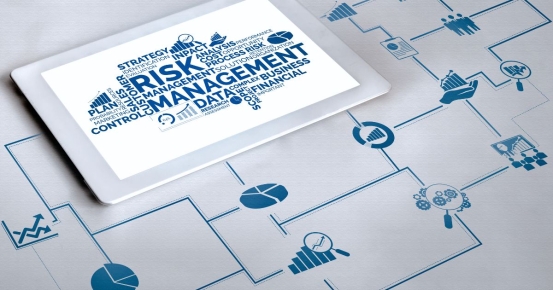Risk Assessment Software in the US: Driving Smarter Risk Mitigation
In today’s dynamic business environment, companies across the US face increasing operational, regulatory, and security risks. To address these challenges, many are turning to modern risk assessment software—digital platforms designed to evaluate, prioritize, and manage threats in real time. With advanced analytics, automation, and compliance tools, these solutions help organizations stay resilient, protect assets, and maintain stakeholder confidence.
In today’s dynamic business environment, companies across the US face increasing operational, regulatory, and security risks. To address these challenges, many are turning to modern risk assessment software—digital platforms designed to evaluate, prioritize, and manage threats in real time. With advanced analytics, automation, and compliance tools, these solutions help organizations stay resilient, protect assets, and maintain stakeholder confidence.

What Is Risk Assessment Software?
Risk assessment software is a digital framework that standardizes how businesses identify, analyze, and control risks. Instead of relying on manual checklists or spreadsheets, organizations can centralize risk data, automate reporting, and monitor threats continuously.
In the US, industries like finance, energy, healthcare, and manufacturing use these tools to meet regulatory obligations and enhance safety. A typical platform supports the entire risk cycle:
Identifying hazards and vulnerabilities
Evaluating likelihood and potential impact
Implementing control measures
Reviewing performance through ongoing audits
This approach not only boosts compliance but also builds organizational transparency by maintaining detailed digital records.
Core Capabilities of US Risk Assessment Platforms
Leading solutions include:
Risk Libraries & Templates – Preconfigured frameworks based on OSHA, EPA, and industry-specific standards.
Dynamic Dashboards – Heat maps, key risk indicators (KRIs), and predictive charts that visualize exposure.
Scenario Modeling – Tools that simulate “what-if” events, enabling proactive planning.
Workflow Automation – Automatic alerts, approval chains, and reporting to streamline management tasks.
Regulatory Monitoring – Built-in updates that reflect changes in US laws and standards.
Cybersecurity Safeguards – Data encryption, multifactor authentication, and compliance with privacy laws like HIPAA and GDPR (for international operations).
Why US Businesses Are Adopting Risk Software
Organizations gain significant benefits by digitizing their risk processes:
- Improved Decision Support – Leaders access real-time insights for resource allocation and risk prioritization.
- Operational Efficiency – Automation reduces paperwork, cuts errors, and speeds compliance checks.
- Regulatory Assurance – Software ensures alignment with federal and state requirements, minimizing fines or penalties.
- Financial Protection – Proactive risk management lowers insurance premiums and reduces the likelihood of costly incidents.
- Cultural Impact – Transparent reporting fosters trust among employees, partners, and regulators.
Key Considerations for Implementation
For risk assessment software to deliver maximum value, US organizations should evaluate:
Industry Fit – Does the system address sector-specific risks, such as HIPAA compliance in healthcare or environmental reporting in manufacturing?
Integration Capabilities – Can it connect with ERP, HR, or incident response systems?
Scalability – Does it support growth and multiple facilities across states?
User Training – Are teams equipped to use dashboards, reports, and alerts effectively?
Support & Updates – Continuous vendor updates are essential for adapting to evolving regulations.
Emerging Trends in US Risk Assessment Tools
The future of risk software in the US is moving toward greater intelligence and adaptability:
Artificial Intelligence & Predictive Analytics – Using historical data to forecast risks and suggest mitigation strategies.
Cloud-First Platforms – Secure, scalable solutions accessible from anywhere.
IoT Data Streams – Integration with connected sensors for live monitoring of environmental, safety, and equipment risks.
Immersive Training Tools – AR/VR risk simulations that enhance workforce preparedness.
Sustainability Focus – Tools that integrate ESG (environmental, social, governance) risk reporting alongside financial compliance.
Conclusion
Risk assessment software has become a cornerstone of modern risk management in the US, helping companies comply with regulations, enhance resilience, and operate with greater confidence. As new technologies like AI, IoT, and cloud services mature, these platforms will only become more powerful. For organizations seeking to future-proof operations and maintain trust, investing in risk assessment software is no longer optional—it’s essential.

